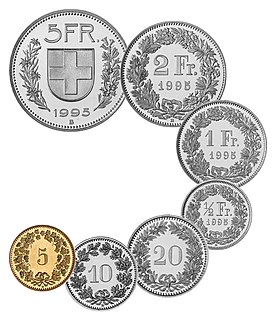 W
WThe Coins of the Australian pound arose when the Federation of Australia gave the constitutional power to Commonwealth of Australia to mint its own coinage in 1901. The new power allowed the Commonwealth to issue legal tender rather than individually through the six former British self-governing colonies of Queensland, New South Wales, Victoria, Tasmania, South Australia, and Western Australia.
 W
WThe Bohemian and Moravian koruna, known as the Protectorate crown, was the currency of the Protectorate of Bohemia and Moravia between 1939 and 1945. It was subdivided into 100 haléřů.
 W
WThe Bohemian and Moravian koruna, known as the Protectorate crown, was the currency of the Protectorate of Bohemia and Moravia between 1939 and 1945. It was subdivided into 100 haléřů.
 W
WCzech koruna, also known as Czech Crown, is the currency of the Czech Republic since 1993. The koruna is one of European Union's 11 currencies, and the Czech Republic is legally bound to adopt the euro currency in the future.
 W
WChinese cash coins were first produced during the Warring States period, and they became standardised as the Ban Liang (半兩) coinage during the Qin dynasty which followed. Over the years, cash coins have had many different inscriptions, and the Wu Zhu (五銖) inscription, which first appeared under the Han dynasty, became the most commonly used inscription and was often used by succeeding dynasties for 700 years until the introduction of the Kaiyuan Tongbao (開元通寳) during the Tang dynasty. This was also the first time regular script was used as all earlier cash coins exclusively used seal script. During the Song dynasty a large number of different inscriptions was used, and several different styles of Chinese calligraphy were used, even on coins with the same inscriptions produced during the same period. These cash coins are known as matched coins (對錢). This was originally pioneered by the Southern Tang.
 W
WCoins of the Maltese lira have been struck from when Malta adopted decimal currency in 1972, to 2007, after which Malta adopted the euro. There were 10 mils in one cent, and 100 cents in one Maltese lira.
 W
WThe krone [ˈkrûːnə], plural kroner, is the currency of Norway and its dependent territories. It is subdivided into 100 øre, which have existed only electronically since 2012. The name translates into English as crown.
 W
WPhilippine peso coins are issued by the Bangko Sentral ng Pilipinas for circulation in the Philippines and are currently available in seven denominations. The Philippine peso has been in use since Spanish rule.
 W
WThe coins of the Swiss franc are the official coins used in Switzerland and Liechtenstein. The name of the subunit is centime in French and internationally, Rappen in German, centesimo in Italian, and rap in Romansh. There are coins in denominations of 5 centimes, 10 centimes, 20 centimes, ½ franc, 1 franc, 2 francs and 5 francs.
 W
WThe withdrawal of a country's lowest-denomination coins from circulation may either be through a decision to remove the coins from circulation, or simply through ceasing minting.